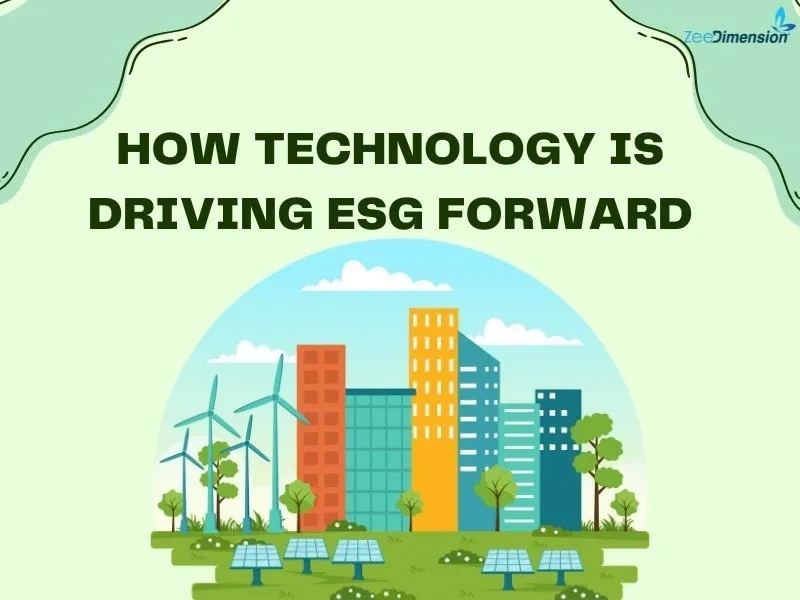
Technology is an essential tool for achieving Environmental, Social, and Governance (ESG) objectives in the modern world. Businesses use blockchain, AI, and IoT technology to increase transparency and improve sustainability. Now let’s explore how these technologies are changing things!
What is ESG?
Environmental, Social, and Governance, or ESG, is a framework for evaluating an organization’s social responsibility, environmental effect, and governance procedures.
Environmental (E): This area examines how well a business manages the environment. It takes into account things like resource conservation, waste management, carbon footprint, and climate change policy.
Social (S): This component looks at how an organization handles its connections with communities, suppliers, customers, and workers. It addresses topics including community involvement, diversity, human rights, and labor practices.
Governance (G): This field looks at the leadership, executive compensation, internal controls, audits, and rights of shareholders of a corporation. It guarantees that a business is run ethically and responsibly.
Investors are using ESG criteria more often to evaluate possible investments to support lucrative, ethical, and sustainable businesses.
Why has ESG become so important?
Investors, regulators, and consumers are increasingly prioritizing companies’ ESG performance, driving demand for greater transparency and accurate reporting in response to new regulations. Focusing on ESG is essential for developing a sustainable and competitive business model. Technology plays a key role in this process, allowing companies to effectively measure, monitor, and improve their ESG impact.
📷
How can AI & Data Analytics help in ESG reporting?
AI helps businesses to automate processes related to data collection, analysis, and reporting. This reduces human labor and increases the effectiveness and precision of ESG disclosures. For instance, a retail company was able to save $5 million annually and reduce its carbon emissions by 50,000 metric tons by implementing AI to monitor energy consumption across 500 stores.
Blockchain for Supply Chain Transparency
Blockchain technology enhances supply chain transparency by securing processes and verifying the ethical sourcing of materials. This not only fosters consumer trust but also ensures compliance with labor and sustainability standards. For instance, a global electronics company utilized blockchain to track rare minerals, leading to a 30% increase in supplier compliance, a 20% reduction in fraud, and annual savings of $10 million.
How does IoT help in energy efficiency?
The Internet of Things (IoT) promotes energy efficiency through automation, utilizing data collected by smart sensors. For example, a Building Management System (BMS) can automatically turn off lights in unoccupied rooms, reduce airflow in office buildings during weekends, or close blinds when windows are exposed to direct sunlight. These immediate adjustments enable companies to save energy and lower emissions. A notable example is a manufacturing plant that achieved a 15% reduction in energy consumption, resulting in annual savings of $2 million and a decrease of 25,000 metric tons of carbon emissions.
How does cloud computing affect ESG?
Cloud computing is revolutionizing the implementation of ESG strategies by improving environmental sustainability, promoting social responsibility, and strengthening governance. It offers organizations the necessary tools and infrastructure to meet their ESG goals effectively. Cloud platforms centralize ESG data, making it easier to share and analyze, while also facilitating better collaboration with external auditors and regulators. For instance, a multinational corporation transitioned its ESG data to the cloud, resulting in savings of $1.5 million, a 40% reduction in audit times, and enhanced transparency.
How Predictive Analytics Managing ESG Risks?
AI-driven predictive analytics enable companies to identify and mitigate ESG risks before they escalate into critical issues. By implementing proactive risk management strategies, organizations can ensure business continuity and reduce financial exposure. For example, a logistics company leveraged predictive analytics to adapt to climate-related risks in its supply chain, successfully avoiding $7 million in potential losses.
The Future of ESG & Technology
The future of ESG is closely intertwined with the evolution of technology, which will play an increasingly significant role in shaping ESG strategies. Innovations such as AI, blockchain, IoT, and cloud computing hold immense potential to enhance sustainable business practices. Companies that adopt these technologies today will position themselves as leaders in the sustainable future of tomorrow, paving the way for more responsible and impactful operations.
To sum up, in the current environment, technology plays a critical role in driving the achievement of Environmental, Social, and Governance (ESG) goals. Using AI, blockchain, IoT, and cloud computing, companies may guarantee ethical behaviors, increase sustainability, and improve transparency.







